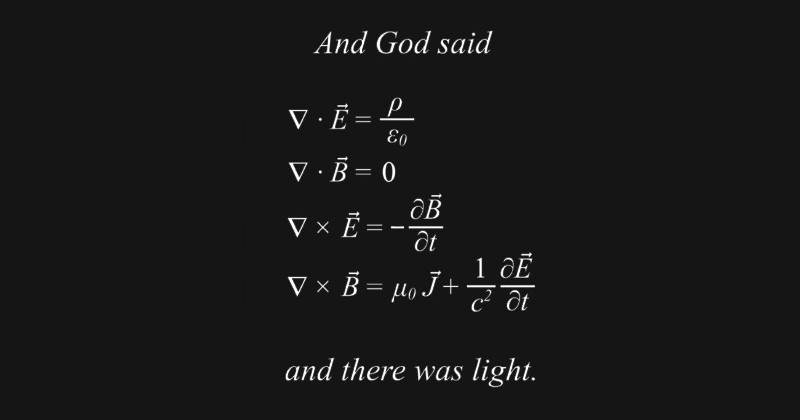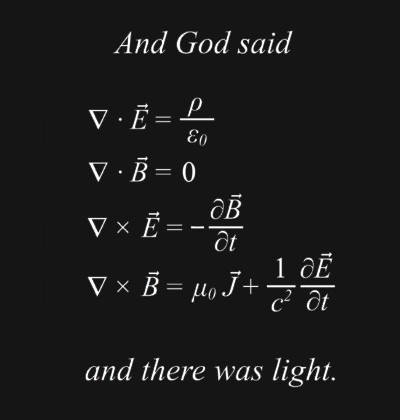
03 Jan Let There Be Light
A policeman stops a student throwing pavement tiles into the river:
– Excuse me sir, says policeman, what do you think you’re doing?
– Come, officer, have a look. Every time I throw a square, a circle comes out! Isn’t that fascinating?!
We humans got deeply accustomed to the existence and nature of waves. It is so instinctive to us that this joke triggers the instant reaction of “these are ripples, obviously they’re circular, what else would you expect?!”.
We are surrounded by waves of all sorts
(both physically and metaphorically)
Sound
I cannot function without my favourite playlists, neither a guitar. To date, I haven’t found anyone that states “I dislike music, I’d rather go for dishwasher sound” (though I recently found various dishwasher sounds on Spotify – they do make babies sleep!)
Physically, sound is just a movement of air molecules. As it goes through space and gets its way into our ears, it triggers vibration of the inside ear membrane. That, in turn makes us hear sounds.
Microwaves
The microwave oven in your kitchen also happens to use waves (who would have guessed?!). The process is very ingenious. The oven sends wave signals of a particular frequency that matches the natural way that water molecules rotate. The molecules tune into the right frequency and spin faster and faster. Very quickly that rotation transfers its energy – causing water to heat up.
Next time you reheat that leftover pizza, take 30 seconds to appreciate the waves that are doing hard work for you!
Light is also a wave (*1)
As it happens, light also shows wave-like behaviour. It bends as it goes through corners and spreads in a circular (well, spherical) fashion. Above all, funky things happen when a wave meets another similar wave – as we’ll discuss soon.
But how do we know it?
Thomas Young, a 19th century scientist, designed an ingenuous experiment to figure out whether a given phenomenon shows wave-like nature. Take a screen and make two small holes inside, and illuminate it with a ray of light.

On the other side of the screen, each of the two holes will DIFFRACT – create its own small wave which will emerge from the source as a spherical wavefront. The two waves will then INTERFERE with one another – at any point whatever amplitude of one wave gets added to the amplitude of another wave. Whenever the peak meets the peak, we see light. Whenever the peak meets a trough, … well, we don’t see anything.
A brilliant explanation of this is given by Veritasium (I recommend watching the entire video, but I got you to the place where we’re seeing water diffraction in action).
One mind-blowing thing to notice is: you can add light to light and get darkness as a result.
We now understand that light is a wave. Let’s complicate matters even more: light isn’t just any wave.
Light is an electromagnetic wave
(and it’s all Maxwell’s fault!)
One scientist that particularly occupies my mind every time I think about light, is James Clerk Maxwell. As it happens, he formulated his electromagnetic theory while at King’s College London, where I also had the honour of studying my Physics degree.
Maxwell had been researching electric and magnetic phenomena and noticed that a number of equations governing the flow of electrons and behaviour of magnets looked oddly similar. After a closer look, Maxwell concluded that these are the two sides of the same coin. A bunch of complex equations describing all of electricity and magnetism can be generalised and rewritten in a very beautiful fashion (see below).
A bi-product of his work was a realisation that there should exist a wave which flies on its own, through space, indefinitely. An electric field induces a magnetic field, the induced magnetic field then induces the electric field, and so both fly away, not needing any additional energy.
By sheer luck, Maxwell found the speed of this wave to be exactly the speed of light. Coincidence? Don’t think so!

In summary
Waves are all around us – really!
Every time you switch on a radio, you’re translating electromagnetic waves into sound waves.
Like watching TV? Light Emitting Diodes create white light that then gets filtered by a Liquid Crystal layer to give you bright colours.
How about we get away from technology and have a walk in a park to get a glimpse of sunlight? Well, sun is a gigantic nuclear reactor. It burns so hot that it sends away massive amounts of energy in the form of visible (and invisible) light. Infrared light gives us a nice warmth, visible light gives us rainbows and UV gives us a sexy tan (and sometimes a skin cancer if you don’t put that sunscreen on!).
The way we use light today is only a fraction of its full potential
And the Next Big Thing on the agenda is the true holographic display.
But if I told you all exciting things at once, you wouldn’t come back to my blog.
So let’s finish for now and save the excitement for a later date, shall we?
References:
- Boundless physics – Diffraction
- Eric Reichwein’s Web Page
- Veritasium – The Original Double Slit Experiment
(*1) Obviously light is both a wave as well as a particle. In this blog (and in general in holography) classical theory is sufficient to describe most of the effects. Quantum-mechanical treatment is outside of the scope here, but interested reader can look up “Wave-particle duality”
